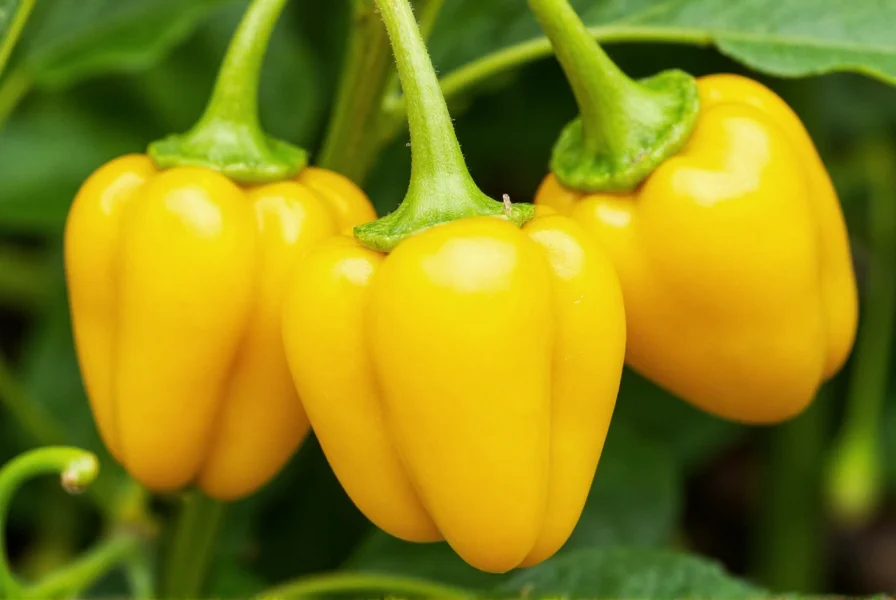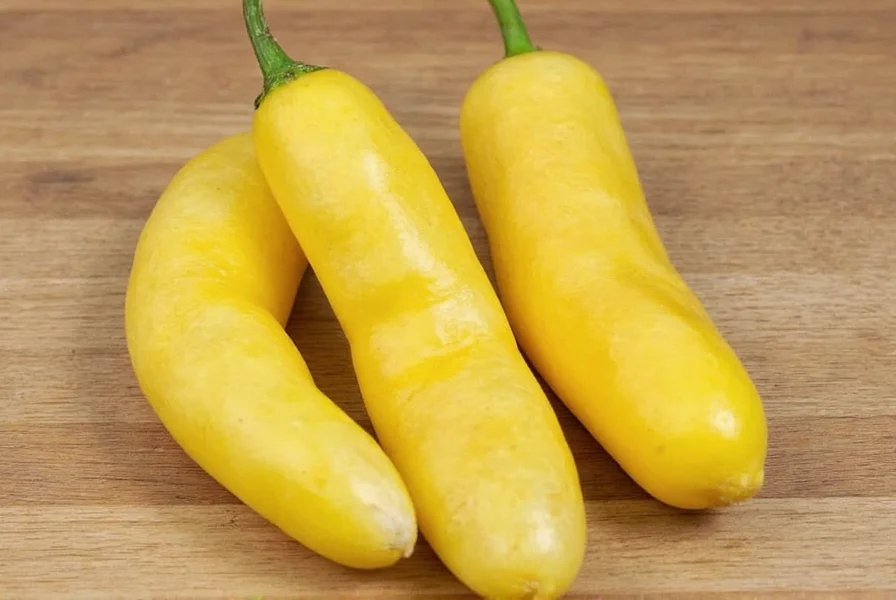The lemon drop pepper has gained popularity among home cooks and professional chefs seeking a flavorful alternative to common chili varieties. Unlike many super-hot peppers, this cultivar delivers a balanced heat experience with distinctive citrus undertones that enhance rather than overwhelm dishes. Its manageable Scoville rating places it between a serrano and a habanero on the heat scale, making it accessible to those with moderate spice tolerance while still providing substantial kick for chili enthusiasts.
Characteristics of Lemon Drop Pepper
Native to South America but now cultivated worldwide, the lemon drop pepper features several distinctive characteristics that set it apart from other chili varieties. The peppers typically measure 2-3 inches in length with a distinctive teardrop shape that narrows to a pointed tip. When fully mature, they develop a glossy, uniform yellow color that resembles a lemon—hence the name.
| Characteristic | Details |
|---|---|
| Scientific Name | Capsicum chinense |
| Heat Level (SHU) | 30,000-50,000 Scoville units |
| Flavor Profile | Citrusy, tropical fruit, floral notes with clean heat |
| Maturation Time | 75-90 days from transplant |
| Plant Height | 24-36 inches |
What truly distinguishes the lemon drop pepper from similar varieties is its complex flavor profile. While many yellow peppers focus primarily on heat, this variety offers pronounced citrus notes reminiscent of lemon and tropical fruits, with subtle floral undertones. The heat builds gradually rather than hitting immediately, allowing the nuanced flavors to shine through before the warmth becomes noticeable.
Culinary Applications of Lemon Drop Pepper
Chefs value lemon drop peppers for their versatility in the kitchen. Unlike some specialty chilies that work best in specific cuisines, this pepper adapts well to various cooking styles. Its bright flavor complements seafood dishes exceptionally well, making it a favorite for ceviche and fish tacos. The citrus notes enhance tomato-based sauces without requiring additional acid, creating naturally balanced flavors.
When using lemon drop peppers in cooking, consider these applications:
- Add fresh slices to salsas and pico de gallo for a citrusy kick
- Blend into creamy sauces where the heat distributes evenly
- Infuse oils for a subtle spicy flavor in dressings
- Use in fruit-based hot sauces that highlight its tropical notes
- Add to marinades for chicken or pork to complement citrus ingredients
For those wondering lemon drop pepper vs habanero, the key difference lies in flavor complexity versus pure heat. While habaneros deliver intense fruitiness with significant heat (100,000-350,000 SHU), lemon drops offer a more approachable experience with their distinctive citrus notes at a fraction of the heat.
Growing Lemon Drop Peppers Successfully
Home gardeners find lemon drop peppers relatively straightforward to cultivate with proper conditions. These peppers thrive in warm climates with plenty of sunlight, requiring 6-8 hours of direct sun daily. The ideal temperature range for optimal growth is between 70-85°F (21-29°C), with soil temperatures above 60°F (15°C) for successful germination.
When planning how to grow lemon drop peppers, follow these guidelines:
- Start seeds indoors 8-10 weeks before last frost date
- Use well-draining soil with pH between 6.0-6.8
- Water consistently but avoid waterlogged soil
- Fertilize with balanced fertilizer every 2-3 weeks
- Provide support for plants as they mature and bear fruit
Harvest peppers when they reach full yellow color for the best flavor development. Unlike some chilies that increase significantly in heat as they mature, lemon drops develop their characteristic citrus notes at full maturity without becoming excessively hot. For gardeners in cooler climates, growing lemon drop peppers in containers allows for easy movement indoors during temperature drops.
Nutritional Benefits and Storage Tips
Beyond their culinary appeal, lemon drop peppers offer notable nutritional benefits. Like all chili peppers, they're rich in vitamin C and capsaicin, which has been studied for potential metabolic and anti-inflammatory benefits. A single pepper provides approximately 100% of the recommended daily intake of vitamin C, along with significant amounts of vitamins A and B6.
Proper storage extends the usability of your harvest. For short-term storage (1-2 weeks), keep unwashed peppers in the crisper drawer of your refrigerator. For longer preservation:
- Freeze whole peppers in airtight containers for up to 6 months
- Dry peppers by stringing them and hanging in a warm, dry location
- Pickle peppers for refrigerator storage up to 6 months
- Make hot sauce or infused oils for pantry storage
When comparing lemon drop pepper flavor profile to other yellow varieties, its distinctive citrus notes make it particularly valuable for dishes where you want heat without overwhelming smokiness or earthiness. It serves as an excellent alternative to Scotch bonnets in Caribbean recipes when a less intense heat is desired.
Common Questions About Lemon Drop Peppers
Understanding the nuances of this versatile pepper helps both gardeners and cooks make the most of its unique qualities. Whether you're considering adding it to your garden or pantry, knowing how it performs in various applications ensures you'll use it to its full potential.

For those exploring using lemon drop peppers in cooking, remember that the seeds and white membranes contain most of the heat. Remove these if you want to enjoy the citrus flavor with minimal heat. When substituting in recipes calling for other peppers, use approximately twice as much lemon drop as you would habanero to achieve similar heat levels while gaining the distinctive citrus notes.












 浙公网安备
33010002000092号
浙公网安备
33010002000092号 浙B2-20120091-4
浙B2-20120091-4